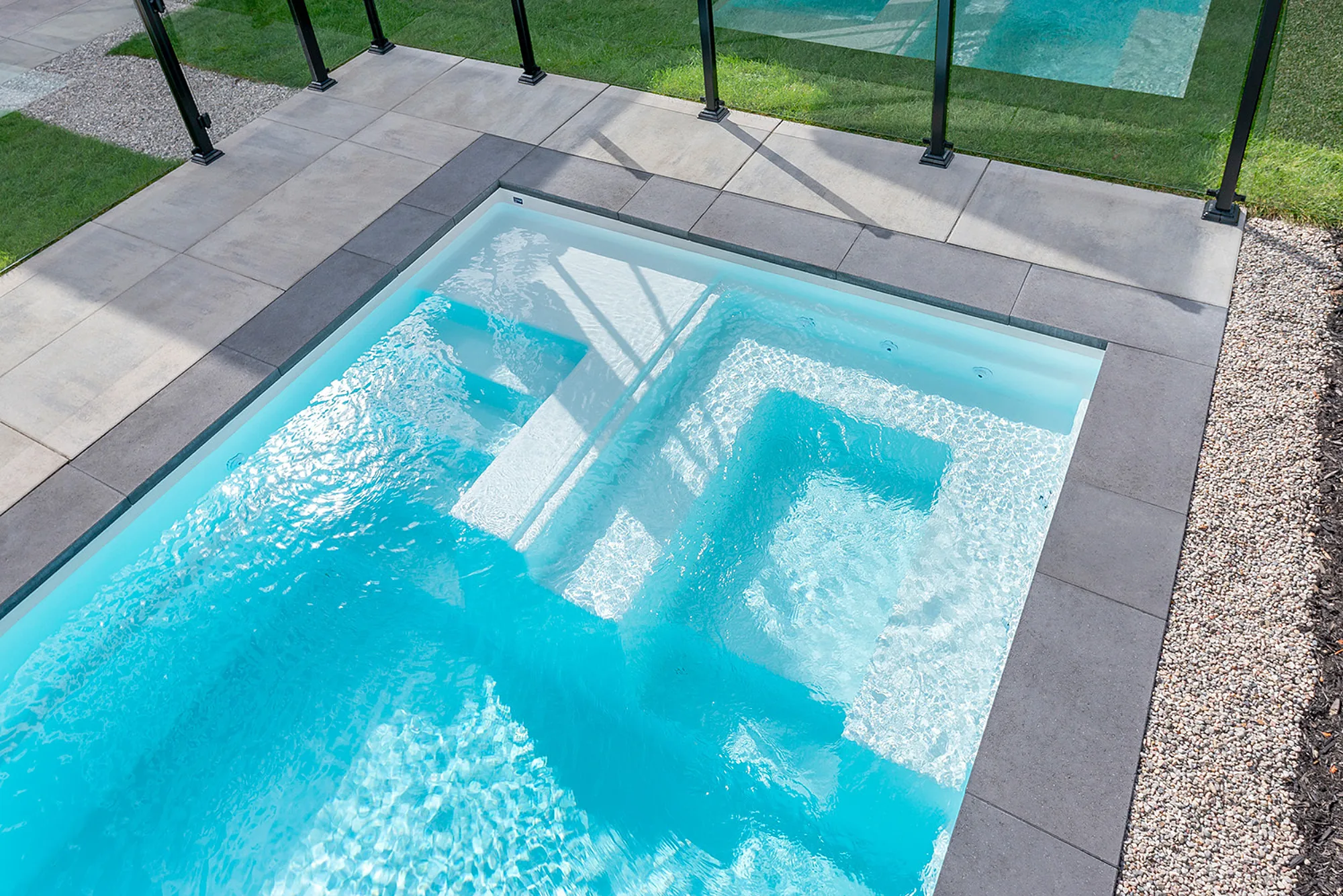When it comes time to choose the type of system for your inground pool, the decision can often be a complex one, as many people are not fully aware of the benefits and differences of each option. Over the past several years, the saltwater method has grown in popularity and demand continues to rise.
For the environmentally conscious, salt is much less harmful than the traditional chlorine system. This is one of the main reasons why many people are turning to this newer method available on the pool market. Before making your final decision, it’s important to understand the pros and cons so you can determine what’s best for you. In this article, discover the saltwater system!
Did you know?
The saltwater system was invented in Australia over 50 years ago. A saltwater pool is essentially a basin filled with both saltwater and chlorine—because did you know that chlorine naturally exists within the salt molecule? This method uses the natural chlorine present in salt rather than relying solely on pure chlorine.
By eliminating all traces of chemical products, the saltwater system disinfects the water in a more natural way. In short, once the water enters the system, it undergoes a chlorine-based process and comes out as saltwater. The salt concentration in a pool using this system is about 3,000 ppm (parts per million), compared to 35,000 ppm in ocean water. So the salt sensation is practically undetectable for swimmers.
As a residential pool owner, the ideal salt level in your pool should be between 2,700 and 3,000 ppm for perfect balance. There are also “low salt” systems available, which operate between 1,300 and 1,500 ppm. Be sure to explore the various options when purchasing Azoria pool accessories.
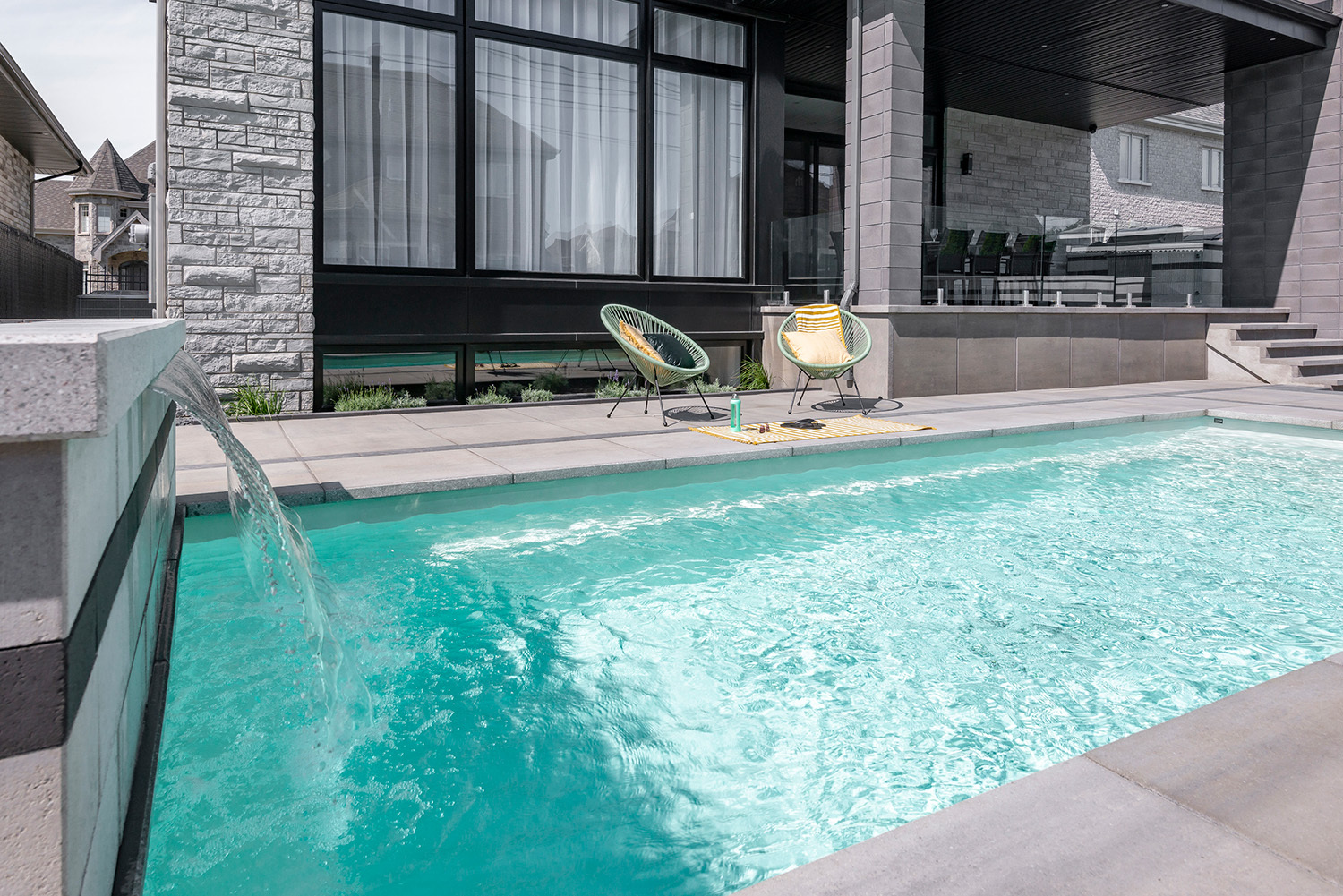
Installation and maintenance
The installation of a salt system is easily done at the beginning of the summer season. Firstly, a large quantity of salt is served in the water basin to reach a specific concentration. After that, a chlorine generator is installed to pump the water and extract the natural chlorine that is in it before its redirected in the pool. When the installation is done and the pool is open, no other manipulation is necessary!
However, it’s recommended to verify the salt concentration of the water a minimum of once a month and to adjust if necessary. For example, if a heavy rain occurs, it can increase the water level and in turn the salt concentration will change. Contrary to the chlorine system, the maintenance is quite easy and requires very little intervention during the summer. As a result, a saltwater system is best for homeowners who are “on the go” with little time they can dedicate to exterior maintenance.
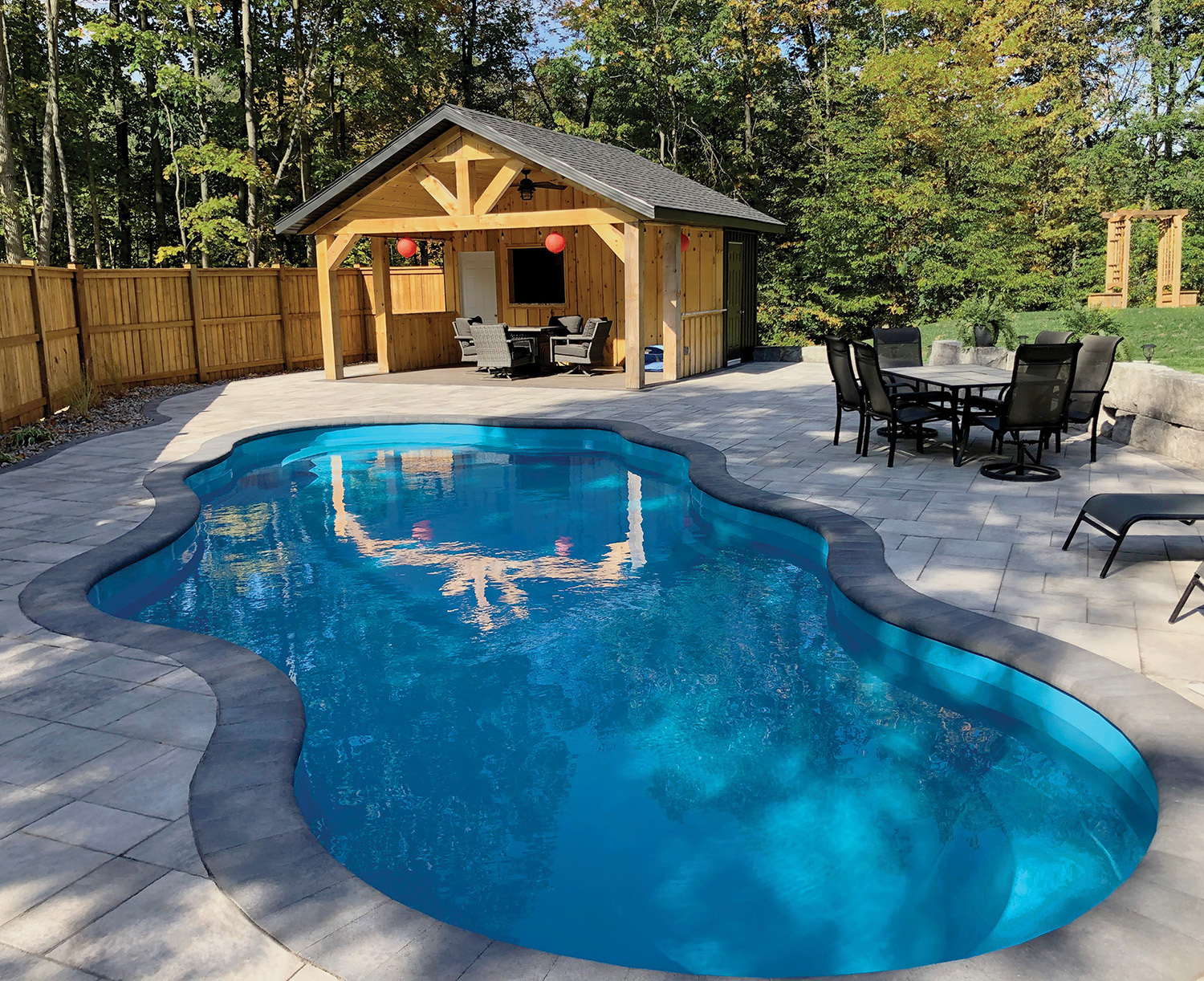
The Pros of a Saltwater System
The main advantage of choosing a saltwater system is the minimal maintenance it requires, as the chlorine level in the pool remains constant. It’s ideal for those who like to travel often during the summer!
In addition to being low-maintenance, the salt system doesn’t require handling any chemical products. The result: no irritation to the eyes, skin, or hair—typically the most unpleasant part of a chlorine-based system.
There’s also no lingering chlorine smell on swimsuits or harsh effects on fabrics! As such, the saltwater option helps reduce environmental impact by eliminating the need for chemical products.
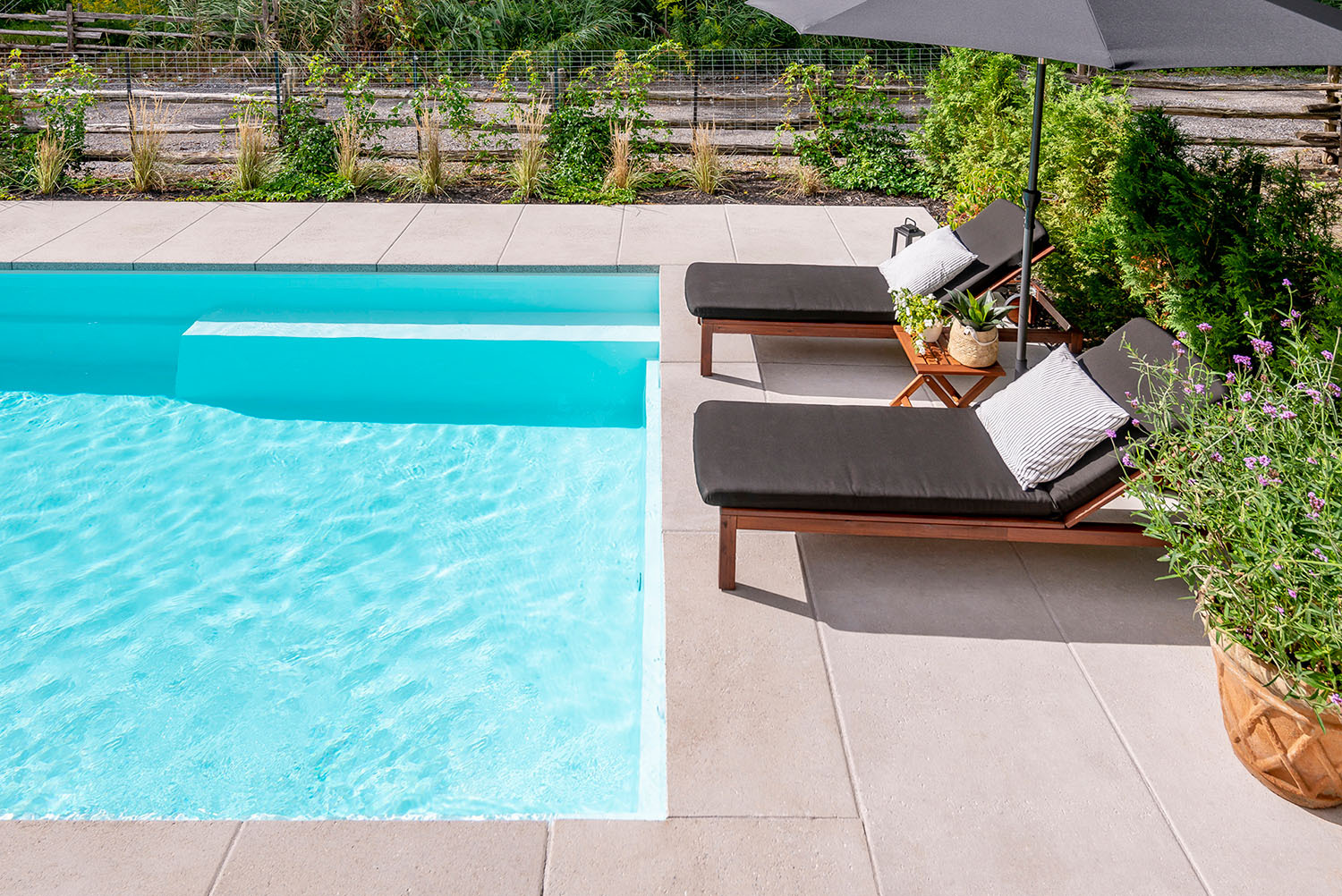
The Cons
A saltwater system may seem more economical, but it’s important to consider a few long-term factors. In fact, the first year is typically the most expensive due to the purchase of the generator, which varies depending on the size of the pool. This device also needs maintenance every 5 to 6 years. After that, the ongoing costs drop significantly, usually limited to purchasing salt each year—about $50 for a medium-sized pool. Keep in mind that choosing a salt system isn’t necessarily more economical in the long run, but rather a way to simplify maintenance.
Another drawback of saltwater systems is their potential to corrode metal. So, if you have a metal ladder, it could get damaged. The ideal solution is to choose an Azoria fiberglass pool, which features wide molded steps built right into the shell.
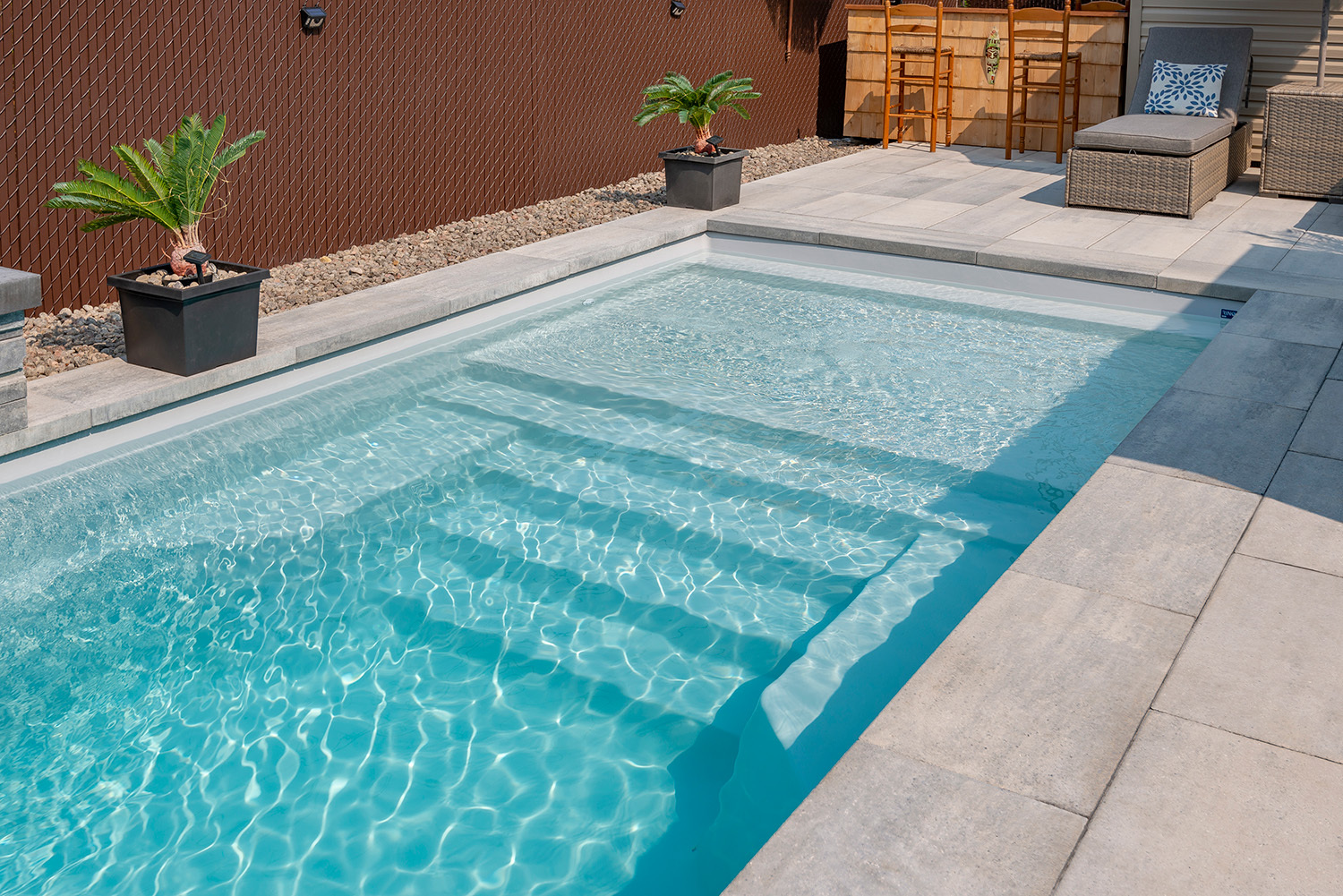
In conclusion
The key is to evaluate your needs and preferences in order to make the right choice. Contrary to what many may think, a saltwater system is not necessarily less expensive. Budget should not be the only reason for choosing this option—instead, focus on its environmental benefits and convenience. When purchasing your Azoria pool, don’t hesitate to ask our affiliated partners for advice to help you make the best decision based on your needs.
